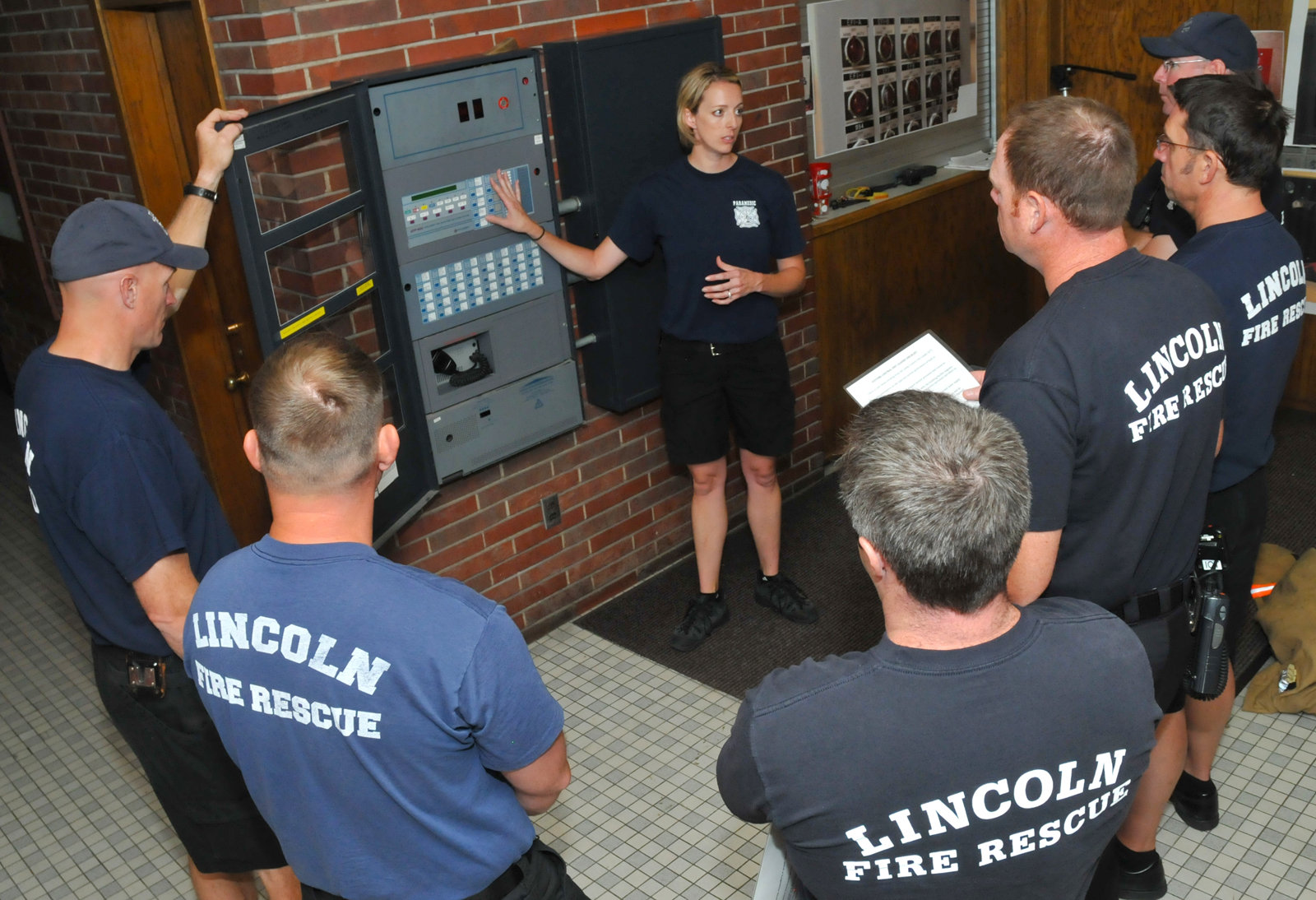
Dean Delany watched as a lazy puff of smoke drifted slowly from under a stairwell door in Pound Hall.
While firefighters hustled hose into position, Delany, a captain with Lincoln Fire and Rescue, felt the door for heat, dropped to a knee and turned the handle for a look. He quickly closed the door and reached for the radio as smoke rushed into the stairwell.
"We have smoke and a possible fire on floor seven," Delany said, reporting to the command post outside the 10-floor residence hall.
On the ground, other fire and rescue teams waited for orders, watching for smoke exiting or debris falling. Inside on first floor, a crew manned the building fire panel and recalled the elevators, securing them safely in the lobby.
As a forward command post was being set up two floors below the fire, orders barked over the radio sent fire suppression and search and rescue teams onto the seventh floor.
Minutes later, the floor was cleared and fire under control, allowing teams to begin ventilating the building.
"That was a good training session," a firefighter said outside Pound Hall, rolling up a 50-foot length of hose. "Were there any 'oopses' we need to talk about, chief?"
The scenario is part of high-rise training attended by nearly 300 Lincoln Fire and Rescue personnel. The training, made possible through an agreement with University Housing and Lincoln Fire and Rescue, has been offered daily since June 3. The final few LFR crews finish the training today (June 14).
"This is the first time in more than 30 years that we have been able to do realistic high-rise fire training inside an actual building," said Jamie Pospisil, a firefighter in LFR's training division. "The goal is to give our fire and rescue personnel as realistic an experience as we can, so when they respond to an actual high-rise fire, they know what to expect."
View photos from the June 11 training session at http://go.unl.edu/fos.
Pospisil worked with University Housing's Larry Shippen and Pat Carlin to get access to Pound Hall. Lincoln Fire and Rescue is using the building for free — insurance will pay for any incidental damages.
"We try to accommodate Lincoln Fire and Rescue whenever possible because, in terms of student safety, it's a huge benefit to have them familiar with our property," Shippen said. "This was also an opportunity for us to be a good community partner. If you look at all the high-rise buildings throughout Lincoln, it would be difficult for fire and rescue to get this kind of access. Our building was open, so it just made sense to say 'yes.'"
Prior to the afternoon fire scenario, fire and rescue workers participated in high-rise fire training sessions in the morning in Pound Hall. Those sessions included information on how to find, access and operate a building fire panel; elevator safety protocols; hauling, running and linking hose; fire-fighting techniques; and ventilation procedures.
"Usually, our training for a high-rise fire is done via a table-top walkthrough exercise," firefighter Chad "Scooby" Walter said. "Those are fine. But to actually be in the building and experiencing what a fire would be like is so much more valuable.
"The next time we get a call like this, we'll know exactly what to do."
— Troy Fedderson, University Communications
More details at: http://go.unl.edu/fos